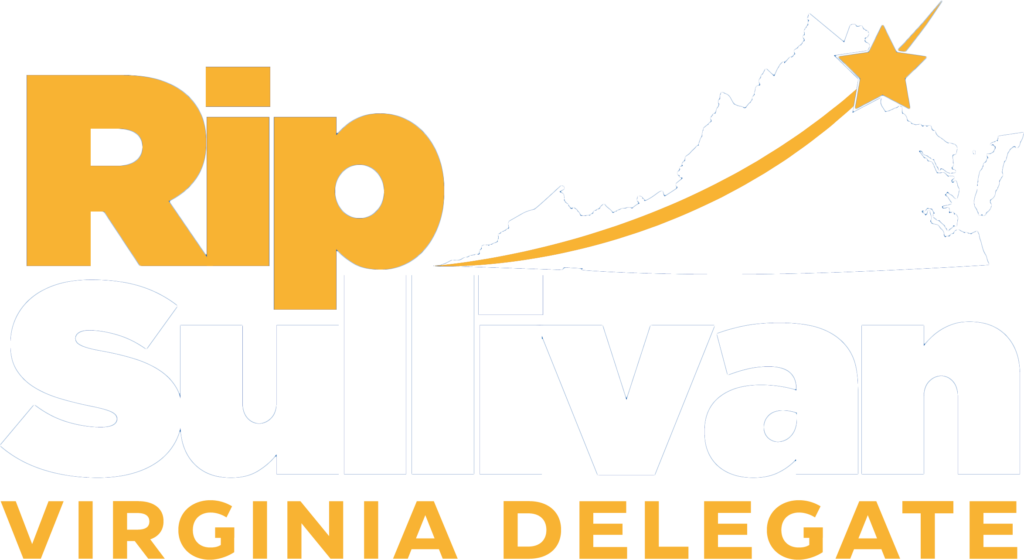University of Virginia shooting suspect Christopher Darnell Jones Jr. had been on the radar of the university’s Threat Assessment Team a couple of times, university Police Chief Tim Longo said during a news conference on Monday.
Virginia has had a law on the books since 2020 that is aimed at keeping firearms away from people who have been legally deemed at risk of harming themselves or others. Virginia is one of 19 states with such statutes, known colloquially as “red flag” laws, to allow for court petitions to temporarily remove firearms from people who could pose risks.
Could Virginia’s red flag law have been used to prevent the killing of three students and the wounding of two others? Officials say it’s too soon to tell, but here’s how the law works:
Since 2020, law enforcement has had the option to petition for a substantial risk order — kickstarting a process to temporarily remove firearms from a person who may be a risk to themselves or others. Since July of that year, judges and magistrates have granted more than 200 such orders around the state.
Del. Rip Sullivan, D-Fairfax, who carried the bill in the House of Delegates, said the law is designed so that law enforcement who is aware of a person who may be at risk, or their loved ones who are concerned, can take preventive action.
“We know, typically, there are situations in which somebody knew or was worried about someone doing harm,” Sullivan said.
Someone who suspects a person is at risk can request that law enforcement file a petition with a court.
A judge or magistrate can choose to issue a substantial risk order — allowing police to remove that person’s guns. The law requires a hearing within 14 days of the emergency order.
At the hearing, the gun owner can argue to have their weapons returned to them. The commonwealth’s attorney — the locally elected prosecutor — can argue the weapons pose a continued risk. A judge has the ability to continue to bar the person from their guns for up to 180 days. (The law also outlines an option for another hearing to further extend the order.)
Following the slayings of students Devin Chandler, Lavel Davis Jr. and D’Sean Perry and the wounding of two others, allegedly by Jones, details have emerged about probes involving Jones.
The university had investigated him for allegedly possessing a gun on Grounds, along with his failure to disclose a gun-related misdemeanor in Chesterfield County and that he was involved in a now-closed hazing investigation.
“There’s still so much that we don’t know,” said state Sen. Creigh Deeds, D-Bath, who represents Charlottesville. “Maybe there’s nothing we could have done — but maybe there is.”
The notion is all too familiar for Lori Haas, whose daughter was wounded in the 2007 Virginia Tech shooting and who now advocates for gun safety laws like Sullivan’s.
“People have asked for a decade or more since the Virginia Tech shooting, ‘How do these people slip through the cracks?’” she said.
She believes that, if used, substantial risk orders can fill the cracks for people who may be at risk of committing violence but don’t meet the thresholds for emergency detention orders or temporary detention orders — both of which are most often used for mental health-related crises.
“Let’s say Joey is not himself; he’s acting violent,” she said, picking a name at random. “Joey is making threats to himself or others. [He’s] exhibiting threatening behavior verbally or physically or on social media. Everybody says there’s often warning signs,” Haas said.
She said such behaviors don’t always meet the standard for detention or custody orders.
“They’re not mentally ill — but the behaviors put them in a crisis situation,” Haas said.
After the Virginia Tech shooting, the state passed laws for public education bodies to create Threat Assessment Teams, such as the one at UVa that had looked into Jones.
Jones was investigated in September for allegedly possessing a gun on Grounds, though university police found no evidence at the time.
They also learned of a misdemeanor charge for a conceal carry violation the year prior in Chesterfield and began a disciplinary action process, as students are supposed to disclose violations, but officials said Jones was uncooperative. The case was never elevated to the school’s judiciary committee. It’s unclear why.
Additionally, the university was aware of Jones’ involvement in a hazing investigation that was closed when witnesses would not cooperate.
(In a new development this week, authorities say they found a rifle and handgun, magazines of ammunition and a device to load bullets faster inside Jones’ UVa dorm room, according to a search warrant obtained by The Daily Progress and an announcement from police.)
UVa has asked Attorney General Jason Miyares to lead an external review to investigate both the university’s response to the shooting and efforts prior to the shooting in assessing Jones as a threat.
Meanwhile, Sullivan said he hopes red flag laws can be a more recognized resource in the future. More immediately, he hopes Virginia can tap into federal funding in the Bipartisan Safer Communities Act, which passed this summer, in order to promote Virginia’s red flag law.
“We need to do a better job letting both law enforcement and the general public know of the availability of this mechanism,” Sullivan said.
Not all instances of gun violence may be able to be avoided by red flag laws, he said.
“But if even just one of them can be, then it seems to me that this has been time well spent,” he said.
#####

